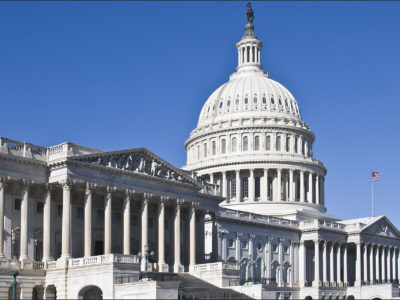
The last time Congress tried to pass climate change legislation, the bill was about 800 pages long. That bill, the Waxman-Markey Act, tried to adopt a comprehensive set of emissions reduction measures, which is a complicated business. But a much simpler law could allow the U.S. to move forward quickly with less ambitious but still highly significant actions. Such a law would also void some of Trump’s most important rollbacks.
All it would take would be four or five pages of legislation, if the new Congress is so minded. Below are four areas where adding a sentence or two to the Clean Air Act — and sometimes only a phrase or two — could eliminate legal uncertainties and supercharge regulatory efforts. If you’re not in the weeds of this stuff, your main takeaway should be the simplicity of these fixes.
Reorient the Act toward climate change. To ensure that limiting climate change is considered an EPA priority, add a new subsection (5) to the congressional findings in section 101(a). The new congressional finding would say “that the emission of greenhouse gases gravely endangers human health and welfare.” (In the interest of clarity, one could instead include a list of known greenhouse gases.) And add the following to subsection (d), relating to the purposes of the Clean Air Act: “(5) to reduce net U.S. emissions of greenhouse gases by at least 40% by 2030 and 80% by 2050.” Obviously those numbers can be shifted depending on Congress’s level of ambition.
EPA jurisdiction over greenhouse gases. To eliminate any doubts on this score, amend section 302(g) by adding the following sentence: “A substance causing or contributing to global climate change constitutes an air pollutant.”
These changes would not only be useful legally, but they would dispel the notion that it’s somehow illegitimate to use the Clean Air Act to address climate change.
Legality of Obama’s Clean Power Plan. To ensure that courts will uphold future efforts similar to Obama’s Clean Power Plan, amend section 111(a)(1) by adding;
“A standard of performance for a greenhouse gas may include regulations governing the frequency or extent of use of facilities, change the fuels used at facilities, or in whole or in part require the use of low or zero emission facilities or processes.”
Also amend section 111(d) by inserting in the first sentence, after the word “air pollutant,” the phrase “that is a greenhouse gas; or….”
State car standards. To allow all state programs for electric vehicles to go forward without being under the cloud of preemption by federal law, add the following at the end of section 209(a): “This prohibition shall not apply to any state law mandating the sale of zero emission vehicles.”
To ensure the availability of a waiver for California standards, add to section 209(b)(1)(B), the phrase “or to reduce the emission of greenhouse gases.” To clarify that states are authorized to impose standards that have the effect of requiring increased fuel efficiency, add to the parenthetical in the body of section 209(b)(1) the phrase “but shall include requirements for reduction of carbon dioxide emissions.”
Getting anything through Congress can be a heroic undertaking. But really, all these changes do is to clarify existing law. Yet these simple clarifications would provide much more confidence that vigorous climate action would survive review by the courts.
The post Short and Simple Climate Legislation appeared first on Legal Planet.
By: Dan Farber
Title: Short and Simple Climate Legislation
Sourced From: legal-planet.org/2020/10/29/short-and-simple-climate-legislation/
Published Date: Thu, 29 Oct 2020 14:34:50 +0000
Vist Maida on Social Me
Website Links
Maida Law Firm - Auto Accident Attorneys of Houston, by fuseology

No comments:
Post a Comment